Fun With Ball Jars
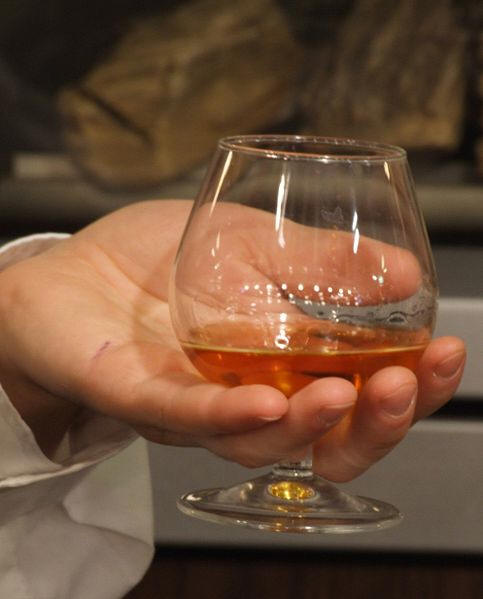
Too many plums or peaches/ Save them for winter time in brandy!
Brandy (from brandywine, derived from Dutch brandewijn — “burnt wine”) is a spirit produced by means of distilling wine, the wine having first been produced by means of fermenting grapes.
Brandy contains 40%–60% alcohol by volume and is normally consumed as an after-dinner drink. It is generally colored with caramel coloring to imitate the effect of long aging in wooden casks.
The origins of brandy are clearly tied to the development of distillation. Concentrated alcoholic beverages were known in ancient Greece and Rome and may have a history going back to ancient Babylon. Brandy, as it is known today, first began to appear in the 12th century and became generally popular in the 14th century.
Initially wine was distilled as a preservation method and as a way to make the wine easier for merchants to transport. It was also thought that wine was originally distilled to lessen the tax which was assessed by volume. The intent was to add the water removed by distillation back to the brandy shortly before consumption.
It was discovered that after having been stored in wooden casks, the resulting product had improved over the original distilled spirit. In addition to removing water, the distillation process leads to the formation and break-up of numerous aroma compounds, fundamentally altering the composition of the distillate from its source. Non-volatile substances such as pigments, sugars, and salts remain behind in the still. As a result, the taste of the distillate may be quite unlike that of the original source.
Peaches And Plums
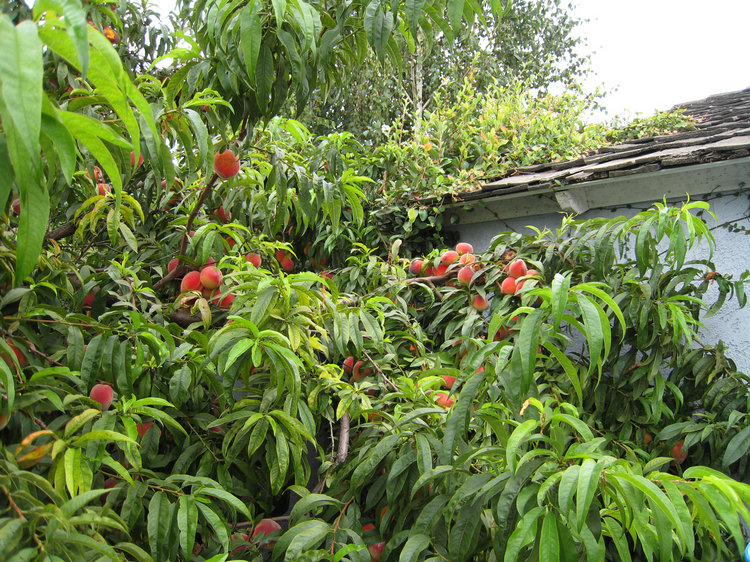
Our neighbors peach tree provides us much fruit

We visit it quite often
Did You Know? - Although its botanical name Prunus persica suggests the peach is native to Persia, peaches actually originated in China, where they have been cultivated since the early days of Chinese culture. Peaches were mentioned in Chinese writings as far back as the 10th century BC and were a favoured fruit of kings and emperors. Recently, the history of cultivation of peaches in China has been extensively reviewed citing numerous original manuscripts dating back to 1100 BC.[2] Its English name derives originally from the Latin malum persicum, "Persian apple", which became the French pêche, then peach in Middle English.
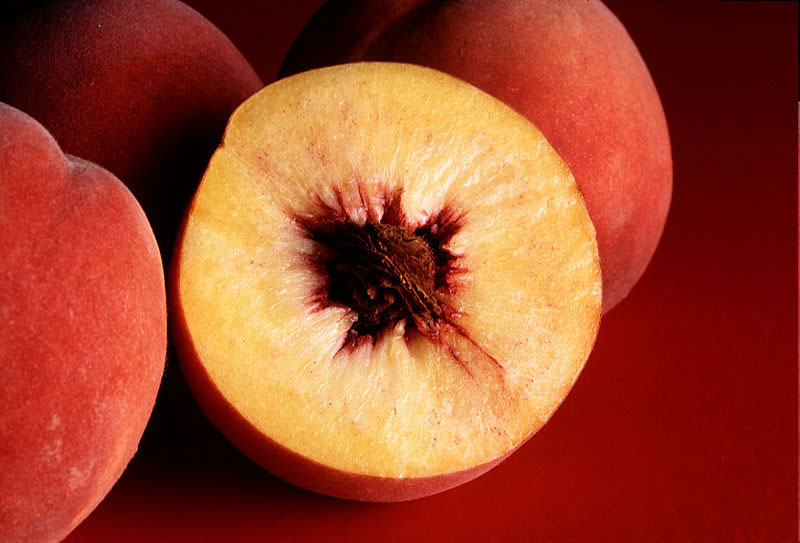
The fruit is excellent

Our plum tree is so loaded we needed props to hold up the limbs
Pick The Best Ones Washing The Plums (Peaches Have To Be Peeled)
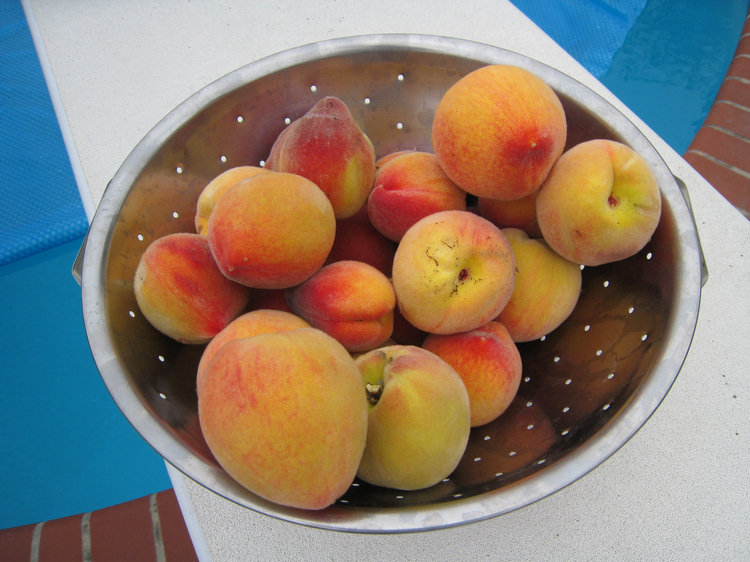
Clean them up and peal them
Did You Know? - The horticulturist George Minifie supposedly brought the first peaches from England to its North American colonies in the early 17th century, planting them at his Estate of Buckland in Virginia.
Various American Indian tribes are credited with spreading the peach tree across the United States, taking seeds along with them and planting as they roved the country.
Although Thomas Jefferson had peach trees at Monticello, United States farmers did not begin commercial production until the 19th century in Maryland, Delaware, Georgia and finally Virginia. California today grows 65% of peaches grown for commercial production in the United States,[6] but the states of South Carolina, Georgia, and Washington also grow a significant amount. Italy, China, India and Greece are major producers of peaches outside of the United States.
Pick Out The Cheapest Brandy
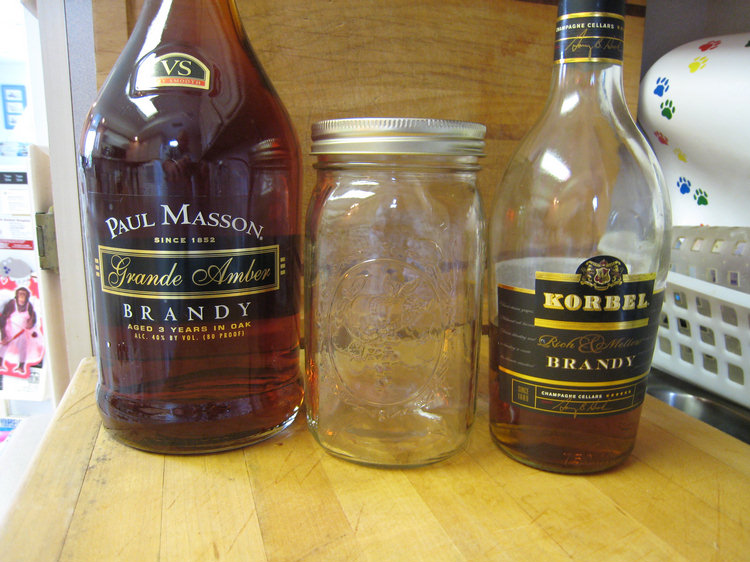
Anything will do....
Did You Know? - Brandy (from brandywine, derived from Dutch brandewijn—"burnt wine")[1] is a spirit produced by distilling wine. Brandy generally contains 35%–60% alcohol by volume and is typically taken as an after-dinner drink. Some brandies are aged in wooden casks, while some are simply coloured with caramel colouring to imitate the effect of such aging (and some brandies are produced using a combination of both aging and colouring).
Brandy is also produced from fermented fruits other than grapes, but these products are typically called eaux-de-vie.
In some countries, fruit flavouring or some other flavouring may be added to a spirit that is called "brandy".
Peel The Peaches
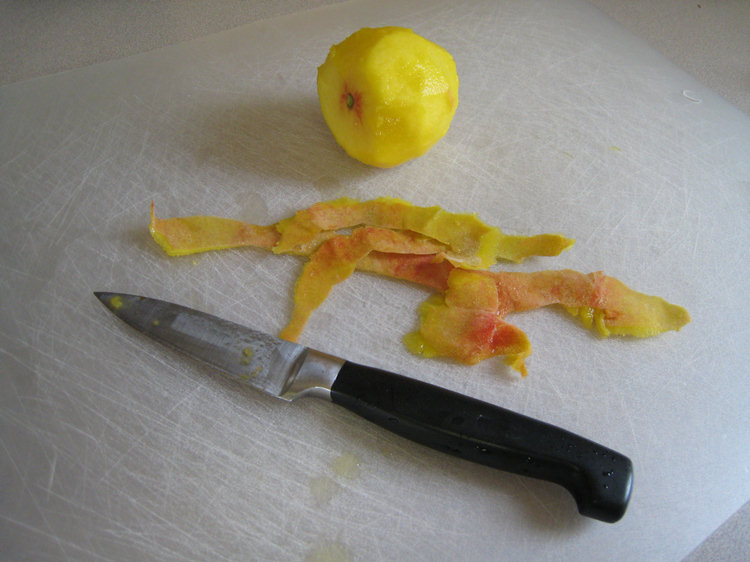
A little pearing knife will do the job
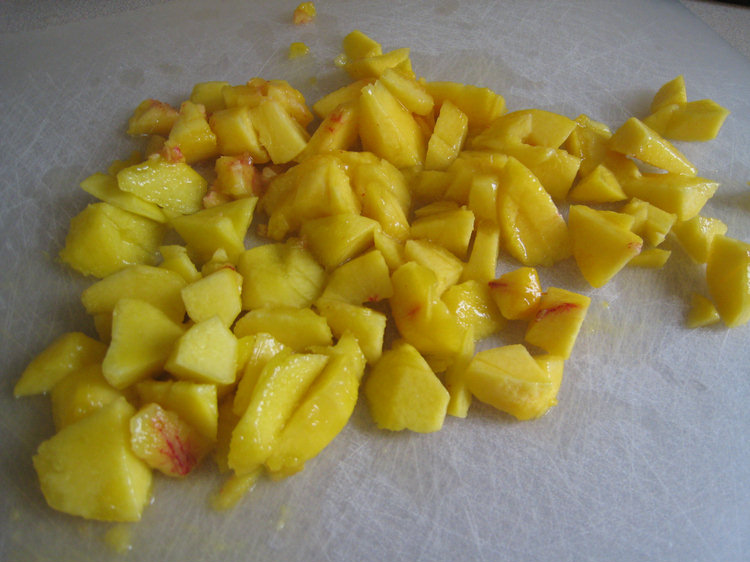
Chop them up into fairly small pieces
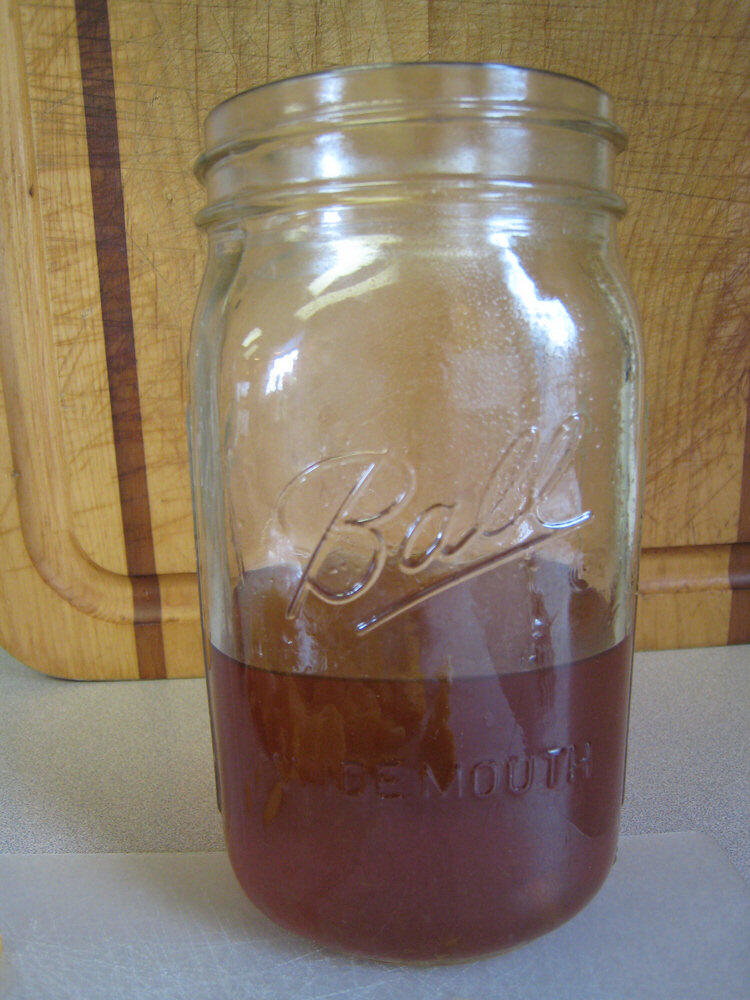
Pour the brandy into the jars and then begin to drop pieces of peaches
or plums into the liquid. This will minimize the air bubbles!
Did You Know? - A Mason jar is a glass jar used in canning to preserve food. They were invented and patented by John Landis Mason, a Philadelphia tinsmith in 1858. They are also called Ball jars, after Ball Corp., a popular and early manufacturer of the jars; fruit jars because they are often used to store fruit; "jam jars" or generically glass canning jars. While largely supplanted by other methods for commercial mass-production, they are still commonly used in home canning.
Today, the terms often refer to jars featuring a two-piece cover: an inner, flat, metal or glass lid, covered by a screw-on ring. The ring holds the lid in place during the canning process, which creates a partial vacuum, sealing the lid until opened. Because lids are sold separately, the jars and rings can be reused.
Mason jars are made of soda-lime glass, and come in a variety of sizes including pint, quart, half-gallon, and cup, as well as in wide-mouth and regular-mouth openings.
The most common U.S. brands of Mason jars are Ball and Kerr. Both are now part of the Jarden corporation.

Squeeze them in
Tamp The Fruit Into The Jars So As To Maximize The Fruit!
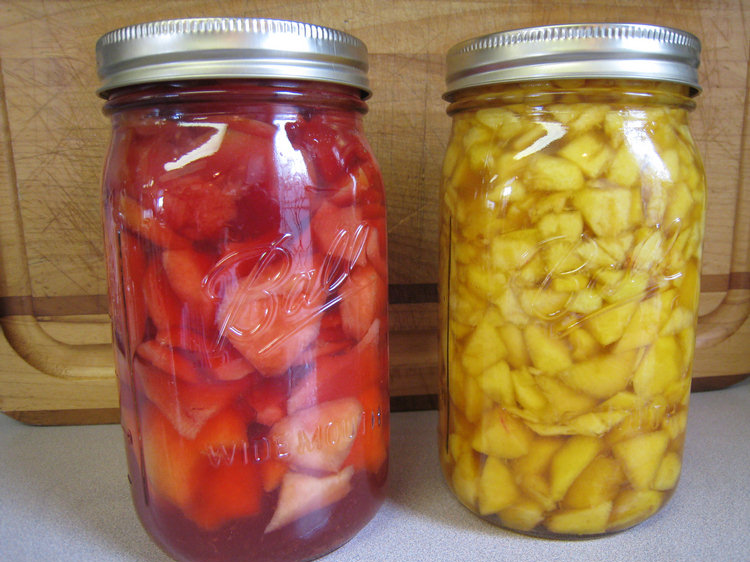
Pretty and good
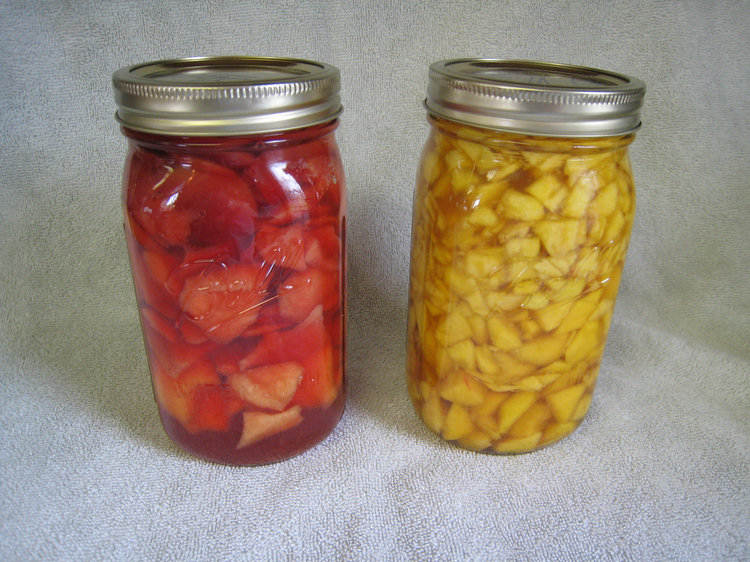
They will last for a long time
Now The Magic... Flambe'
Did You Know? - Flambé is a cooking procedure in which alcohol (ethanol) is added to a hot pan to create a burst of flames. The word means flamed in French (thus, in French, flambé is a past participle; the verb is flamber).
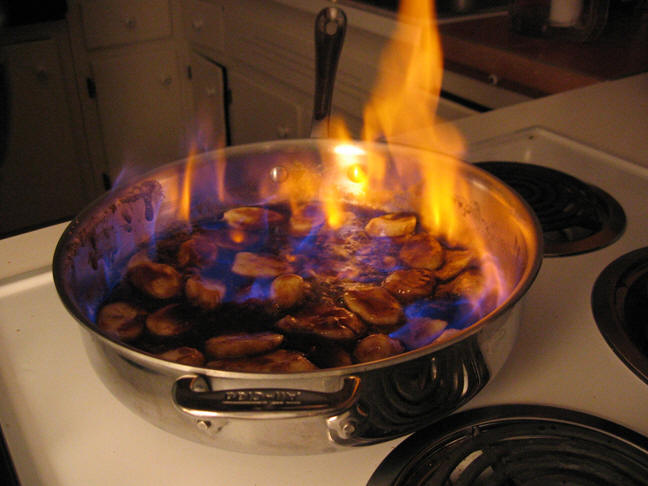
It is typically done to create an impressive visual presentation at a dramatic point in the preparation of a meal. The flames result from the combustion of the flammable alcohol, which is quickly consumed, subsequently extinguishing the flames.
Although the practice of igniting food for show can be traced to the Moors in the 14th century, modern flambéing was discovered in Monte Carlo in 1895, when Henri Carpentier, a waiter, accidentally set fire to a pan of crêpes he was preparing for the future Edward VII of the United Kingdom. He discovered that burning the sauce affected its flavor in a way that he could not have anticipated.
Rum, cognac, or other flavorful liqueurs that are about 80 USA proof (40% alcohol) are considered ideal.
Simply lighting food on fire is not flambéing in and of itself. Igniting a sauce with alcohol in the pan changes the chemistry of the food. Because alcohol boils at 78 °C (172 °F), water boils at 100 °C (212 °F) and sugar caramelizes at 160 °C (320 °F), ignition of all these ingredients combined results in a complex chemical reaction, especially as the surface of the burning alcohol exceeds 240 °C (500 °F ).
However, because taste is a very subjective sense, not everyone can discern a change in flavor as a result of flambéing. Some claim that because the flame is above the food and since hot gases rise, it cannot significantly affect the flavor, although in an informal taste test conducted by the Los Angeles Times of two batches of caramelized apples (one flambéed and one simmered), one tester declared the "flambéed dish was for adults, the other for kids." In other words, the flambe version has a less sugar flavor than the one that is simmered.